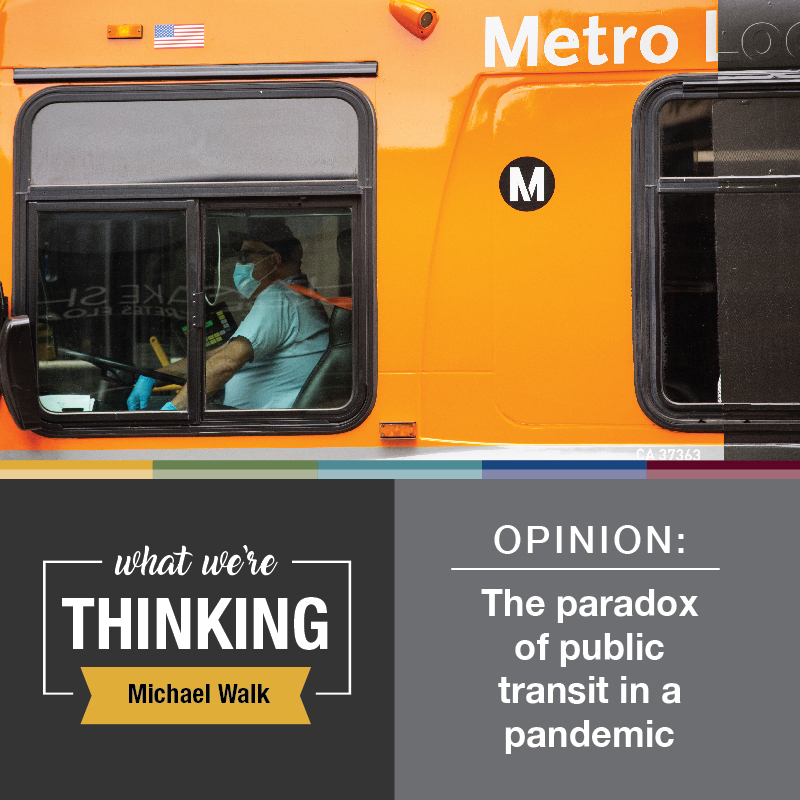During a pandemic, public transit may illustrate the ultimate Catch 22, even as dire conditions underscore the vital need for transit services in many communities.
In the widening battle against COVID-19, we’ve been admonished to distance ourselves from each other to lower our risk of contracting the disease or spreading it to others. Shelter-in-place policies aim to limit human contact, confine the pandemic source, and eventually snuff it out. The more strict the quarantine, the more effectively it can choke off a virus.
Buses, trains and subways, however, don’t readily lend themselves to such limitations. At the same time, they may constitute the only realistic travel alternative for health care professionals, grocery store employees and others whose labors are essential to our daily lives and our recovery from this crisis. The same is true for people who have no other means to access critical medical care, many of whom are already at higher risk of infection due to their age or health status.
In the midst of our national emergency, public transportation can assume conflicting roles, potentially facilitating the spread of disease while supporting our ability to fight and recover from it.
And that begs the question: What’s the ideal balance between serving public health interests by limiting the human interaction inherent in public transit, and still providing a level of service that bolsters essential functions?
Finding that equilibrium isn’t easily or simply done. But we’re gathering insights now to better understand the pandemic’s effects on transit agencies. Our research will examine the impacts of the COVID-19 spread in terms of enhanced cleaning, revenue and ridership losses, service changes and staffing adjustments. What we learn could eventually provide lessons to inform how agencies perform in future emergencies.
One thing we know already is that systems across the U.S. are cutting their schedules in response to declining ridership and revenue. Still, transit agencies are doing what they can. Some are offering free fares for their customers — not to boost ridership, but to help riders with social distancing efforts by reducing the human bottlenecks that happen when riders are paying or showing a pass while boarding.
Other agencies are requiring riders to board through rear doors, limiting the number of riders inside a single vehicle, or even posting signs on alternating seats to encourage riders to distance themselves.
These are smart moves to enhance safety not only for passengers, but for transit drivers, too.
We can reasonably expect that public transit services may appear and operate differently after the pandemic than they did before “shelter-in-place” became such a common phrase. The models for how transit services are funded may need to evolve. Shifts in employment and housing patterns may necessitate a broad transformation of how we move from points A to B. Transit employee safety may take center stage, requiring barriers or quickly accessible personal protective equipment to shield transit drivers from pathogens transmitted by passengers. It’s difficult to say exactly how public transportation services may be different once this national emergency is behind us.
But it’s a safe bet that the fundamental necessity for those services will not diminish. If anything, the need could be even greater in a post-COVID-19 America. None among us knows exactly what that America might look like, but if initial unemployment projections of 30 percent are anywhere close to being accurate, those who do have jobs may find that they rely upon public transit even more than ever, particularly if they can’t work from home. And if that’s the case, everyone by extension will rely heavily upon it, too — whether a regular rider or not.
Walk is a research scientist and manager of the transit mobility program at the Texas A&M Transportation Institute.
This article was originally published in the Austin American Statesman, April 21, 2020 and in Mass Transit, April 22, 2020.
